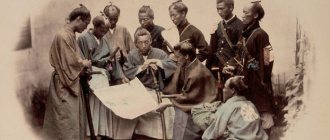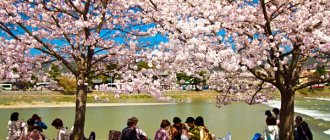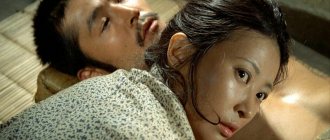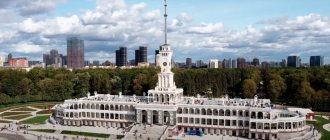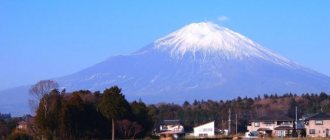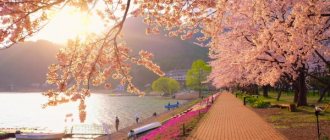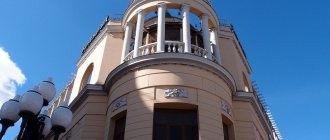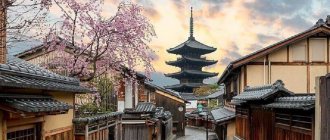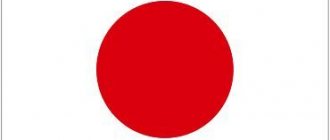Those who are interested in Japanese culture most likely know a lot about one of its most prominent representatives. Yukio Mishima's real name is Kimitake Hiraoka . His nickname literally means "Charmed-by-Death-Devil". It was not without reason that he came up with such a fateful name for himself. All his life he was a first-class actor, he waxed poetic about death, living on the edge, trying everything at once. In addition to his frenzied literary pursuits, he acted as a theater and film director, an actor, and even a symphony orchestra conductor. He tried himself in different directions - he flew on a combat fighter, circled the globe several times, visited gay clubs in Ginza, although he was married, and was a fifth dan holder in the art of kendo fencing.
On November 25, 1970, Yukio Mishima, who had repeatedly amazed the public with his eccentric antics, staged the last performance in his life, and this time it was by no means a harmless performance. He tried to raise a mutiny at one of the Tokyo Self-Defense Forces bases, calling on the soldiers to oppose the “peaceful constitution”, and when his idea failed, the writer took his own life in the medieval way of hara-kiri...
Almost everyone who wrote about Mishima was forced to start from the very end - with the tragic events of November 25th. And this is not just a means of arousing reader interest - after the bloody performance staged at the Ichigaya military base, it is no longer possible to consider the Mishima phenomenon otherwise than through the prism of this day, which clarified much that had previously seemed incomprehensible, putting everything in its place.
He died when he was 45. During his short life, he managed to do an incredible amount. 40 novels, 15 of which were filmed before the writer’s death; 18 plays that were successfully performed in Japanese, American and European theaters, dozens of collections of stories and essays - this is the impressive result of a quarter-century of literary work.
“Everyone says that life is a stage. But for most people it doesn’t become an obsession, and if it does, it’s not at such an early age as mine. When my childhood ended, I was already firmly convinced of the immutability of this truth and intended to play the role assigned to me, without ever revealing my real essence.”
This is a quote from the first, the author’s acclaimed novel “Confession of a Mask” by Yukio Mishima, a work that is largely autobiographical and shockingly frank. In many ways, these lines can be considered the key to understanding most of the author’s actions and his life in general.
Childhood and youth
Yukio Mishima, whose real name was Kimitake Hiraoka, was born on January 14, 1925 in the Yotsuya district of Tokyo, located on the site of the modern Japanese city of Shijuku.
Yukio Mishima as a child / Village of Yamanakako
His father Azusa Hiraoki was a major government official and a highly educated intelligent man, and his mother Shizue Hashi came from a family of literary lovers who had long served the Maeda clan from the Kaga domain. The boy had grandparents, as well as a younger sister, Mitsuko, who died of typhus at the age of 17, and a brother, Chiyuki, who was born in 1930.
As a child, Mishima was separated from his peers and raised by the older generation, who were looked after by members of the Arisugawa dynasty, who were the heirs of the younger branch of the Japanese imperial family.
Biography[ | ]
Childhood (1925-1940)[ | ]
Yukio Mishima was born on January 14, 1925 in the family of a prominent government official Azusa Hiraoka and his wife Shizue. Mishima's father, having graduated with honors from the Faculty of Law of Tokyo Imperial University, brilliantly passed the state exam required to work as an official at the highest level, however, due to personal bias and intrigue behind the scenes of the bureaucracy, instead of the Ministry of Finance, he was hired to work in the ministry, which is now is called the Ministry of Agriculture, Forestry and Fisheries. Mishima's father's work colleague was the future Prime Minister of Japan Nobusuke Kishi. After the eldest son Kimitake, his younger sister Mitsuko (born 1928) and brother Chiyuki (born 1930) were born into the family. Mishima's grandfather Hiraoka Sadataro was the governor of Southern Sakhalin from 1908 to 1914. He resigned after a scandal related to speculation in Sakhalin forests.
Mishima as a child. April 1931
Until the age of 12, when he entered the first grade of middle school, Kimitake lived and was raised in the house of his grandmother Natsuko. He could even see his mother only with the permission of his grandmother. Living together with Natsuko, who took the sickly Kimitake from his parents and, protecting him from the outside world, raised him in strict and refined aristocratic traditions, had a huge influence on the formation of the future writer. Kimitake's isolation from his peers of the same sex led to the fact that he began to speak in a manner characteristic of female speech. Prone to hysteria, Natsuko, despite the psychological stress that her behavior caused Kimitake, was a fine connoisseur of kabuki and, as well as the work of Kyoki Izumi, and instilled in Kimitake a love of prose and theater.
Serious illnesses and constant ailments, due to which Mishima did not take part in the games of his peers and often missed school, also left an indelible imprint on the personality of the future writer. Mishima grew up as an impressionable and gifted child who spent a lot of time reading books. He graduated from a privileged school with honors, receiving a silver watch from the hands of Emperor Showa.
Youth during the war years (1941-1945)[ | ]
Obeying his father's wishes, Mishima entered the Faculty of Law at the University of Tokyo, where he studied German law. The same period in the writer’s life dates back to his strong passion for the literature of German romanticism, which later gave rise to interest in the works of Thomas Mann and the philosophy of Friedrich Nietzsche[5].
On August 15, 1945, the Pacific War ended with the surrender of Japan. In the stream of suicides that followed that day was a lieutenant and former literary critic, Zemmei Hasuda, who at that time was Mishima’s idol and spiritual mentor, who shot himself on August 19 in Malaysia. On October 23, Mitsuko, Mishima's younger sister, died of typhus at the age of 17. At the same time, Mishima broke up with his first love, Kuniko Mitani (she later married a bank employee, becoming the aunt of the famous Japanese businessman Junda Ayugawa), the daughter of a statesman and diplomat Takanobu Mitani and the younger sister of Makoto Mitani, one of Mishima’s closest friends . Kuniko and Makoto Mitani served as prototypes for Sonoko and Kusano, characters in the later novel Confession of a Mask.
Literary debut and “Confession of a Mask” (1946-1951)[ | ]
Mishima (bottom) and Shintaro Ishihara in 1956
In 1946, Mishima made a pilgrimage to Kamakura to the recognized classic of Japanese literature, Yasunari Kawabata, who lived there, showing him the manuscript of his stories “Cigarette” and “The Middle Ages” with a request for assistance in their publication. On the recommendation of Kawabata, who at that time held an administrative post in the Kamakura library, “Cigarette” was soon published in the magazine “Man” (Japanese: 人間). Thus, having entered the literary world, thanks to the patronage of the elder master, Mishima maintained a respectful attitude towards Kawabata as his teacher until the end of his life (at the same time, however, never directly calling him a teacher, limiting himself to the address Kawabata-san). In the same year, Mishima's story "Narrative at the Cape" appeared in Gunzo magazine.
In January 1947, Mishima began to take part in informal meetings organized by Osamu Dazai and Katsuichiro Kamei. There is a known case when at one of the meetings, expressing his opinion about Dazai’s work, Mishima categorically stated that he could not stand his works. According to Mishima himself, the shocked Dazai responded to this daring statement that since Mishima still comes here, it means that he is not indifferent to Dazai’s works. It is curious that Kazuo Nohara, who was also present at this incident, conveys the words of Dazai, spoken by him with undisguised anger, otherwise: “If you don’t like it, then don’t come here again.” The outrageousness of Mishima's statements and actions would later become one of his integral features.
In November 1947, Mishima graduated from the Faculty of Law of the University of Tokyo. Trying to get a job at the Japan Industrial Bank (Japanese: 日本勧業銀行), he passed the relevant exam, but Mishima’s candidacy was rejected due to his poor health. After this, however, having successfully passed the state qualifying exam required to work as a high-ranking official (in the list of results, Mishima's name appeared in 138th place out of 167), Mishima worked for some time in the Ministry of the Imperial Household, after which, on the recommendation of his father, he moved to the Ministry of Finance. Combining the work of an official with active literary activity, Mishima wrote his first major work, entitled “The Thief.” At the same time, he met the writer Fusao Hayashi, a relationship with whom Mishima spoiled only in later years, according to him, due to Hayashi’s political unscrupulousness.
In 1948, Mishima joined the literary association “Modern Literature”. Having received an order to write a novel from Kazuki Sakamoto, the editor-in-chief of the Kawadeshoboshinsha publishing house, Mishima, who was trying to live the double life of an official and a writer, almost died due to exhaustion of his body, falling from a railway platform and almost getting hit by a train. This incident contributed to the fact that in September 1948, Mishima resigned from the Ministry of Finance and devoted himself entirely to literary activities, which his father was gradually forced to come to terms with.
In July 1949, Mishima’s newly completed novel “Confession of a Mask” was published, which, on the one hand, became a sensation due to the openness of homosexuality presented in it, and on the other, was highly praised by critics, which allowed Mishima to take his place in the literary elite Japan. Confessions of a Mask was followed by Lust for Love (1950) and Forbidden Colors (1953). Based on the homosexual theme of Forbidden Flowers, Tatsumi Hijikata staged a performance of the same name in 1959, which is usually identified with the origins of butoh dance. The success of Mishima's numerous works made him one of the leaders of Japanese post-war literature. In December 1951, under the patronage of his father and as a special correspondent for the Asahi Shimbun newspaper, Mishima went on a trip around the world, from where he returned in August of the following year.
Restructuring of body and spirit and the “Golden Temple” (1952-1957)[ | ]
From his trip around the world, Mishima took away, in his own words, a personal rediscovery of sunlight, physicality and sensations, which had a huge impact on his subsequent literary work. Returning to Japan, starting around 1955, he undertook a radical restructuring of his own body, becoming involved in bodybuilding. At the same time, Mishima, having become interested in the classical Japanese literary tradition (his attention was attracted primarily by Mori Ogai), began to change his writing style. Mishima's ambivalent change was expressed in the novel The Golden Temple (1956), influenced by the aesthetics of Mori Ogai and Thomas Mann,[5] which was based on the story of the burning of the Kinkakuji Temple by a young monk. “The Golden Temple” became one of the writer’s creative peaks and is considered the most widely read work of Japanese literature in the world[6].
During these years, a period of enthusiastic perception of each new work of Mishima by readers began. First, written against the backdrop of the idyllic landscape of Kamishima Island (Mie Prefecture) based on the Greek classic Daphnis and Chloe, the novel The Sound of the Surf (1954), and then The Long Spring (1956) and Shattered Virtue (1957) opened the series works that have become bestsellers. Many of them became so popular that they were filmed. Mishima became one of the central figures of the Japanese literary world. At the same time, as if demonstrating the versatility of his own talent, Mishima turned to drama and wrote, along with numerous plays, a collection of modern plays for the Noh theater, and then, having joined the Bungakuza Theater, he made his debut as a director of his own works and an actor.
World fame and "Kyoko's House" (1958-1964)[ | ]
In 1959, the novel “Kyoko’s House” was published, which took about two years to create and which, according to the author’s plan, was opposed to “The Golden Temple”: if “The Golden Temple” was a deep analysis of the inner world of an individual person, then in “Kyoko’s House” “The central focus has become the reflection of the essence of the modern era as a whole. The opinions of literary critics were divided: Takeo Okuno called the work a real masterpiece, while Ken Hirano and Jun Eto unanimously assessed Kyoko's House as a complete failure. The reaction of readers who were inclined towards the opinions of Hirano and Eto also could not be called positive. As a result, Mishima, spoiled by success, experienced truly strong disappointment for the first time in his literary career, which became a turning point for his entire subsequent career.
Nevertheless, for the still popular Mishima, the period following the publication of Kyoko's House turned out to be fruitful. Among the novels and stories he wrote during these years are “After the Banquet” (1960), “Beautiful Star” (1962), “Silk and Insight” (1964), short stories “Senbei for Ten Thousand Yen” (1960), “Patriotism” (1961), “The Sword” (1963), the plays “Roses and Pirates” (1958), “Tropical Trees” (1960), “The Cat of Joy” (1963) and other works.
Mishima's personal life also underwent changes. In 1958, he married Yoko Sugiyama, daughter of the famous master of classical Japanese painting, Yasushi Sugiyama. Mishima commented on the choice of his wife, saying that Yoko, as the daughter of an artist, is free from illusions about what the artist really is. Together with his wife, Mishima moved into a new mansion built in an American colonial architectural style reminiscent of the Victorian era (designed and built by a famous Japanese construction company). However, the long-awaited completion of the ambitious construction also brought numerous troubles. These included a scandal and a lawsuit initiated by diplomat Hachiro Arita, who in 1961 accused Mishima of violating Arita's right to privacy in the work After the Banquet (the case was closed with Arita's death in 1965). In addition, that same year, Mishima received threats of physical harm from right-wing radicals, which was caused by Mishima's well-known support for the writer Shichiro Fukazawa, who included in his novella “An Extraordinary Dream” a scene that delighted the Japanese with the murder of Crown Prince Akihito and the princess by the Communists Michiko, which offended extremists and led to a terrorist attack known in the press as the “Nakajima Scandal” (named after the president who published the novel from the Chuokoron publishing house, whose home and family were attacked). As a result, Mishima's residence was under police protection for several months. The feeling of fear of right-wing extremists that Mishima experienced during this period, according to his younger brother, diplomat Chiyuki Hiraoka, largely explains the radicalism and ultra-right views of the “late” Mishima.
Already by 1962, Mishima had matured in sufficient detail the idea of the tetralogy “Sea of Plenty”, and in 1963 a new scandal erupted, this time around the play “Koto of Joy”, which the management of the Bungakuza Theater categorically refused to stage due to its excessive politicization: as a result Mishima and 14 leading actors of the theater defiantly left Bungakuza. However, despite the fact that “Koto of Joy” and some of Mishima’s other works largely corresponded to the spirit of the time, when the intersection of politics and art became ubiquitous in the wake of unprecedented civil protest against the Japanese-American security treaty, Mishima was still far from being politicized from the fanaticism to which it reached in the second half of the 1960s.
During this period, Mishima added kendo training to his bodybuilding activities. Starring in Yasuzo Masumura's film Karakkaze Yaro (produced by Masaichi Nagata, Daiei Studios, 1960), posing for the famous photographer Eiko Hosoe for an album replete with masochistic motifs entitled Punishment by Roses (1961), as well as other Mishima means purposefully began to create in the media a cult of his body, strong and transformed after grueling training. Mishima’s actions, which had nothing to do with his literary activity, on the one hand, can be assessed as a vulgar flaunting of his own vices, but on the other hand, they allow us to look at Mishima, who saw right through and freely manipulated in his own interests the mechanisms of the media, which unexpectedly gained leverage in the post-war years tangible social influence, as a harbinger of modern pop idols and show business “stars” skillfully forming a favorable image.
In addition, this period is characterized by numerous performances of Mishima’s dramatic works, as well as the popularization of his work in Europe and America, thanks to translations into European languages that began to appear in print. Among those who contributed to the expansion of Mishima's readership were famous American Japanese scholars Donald Keene and Edward Seidenstikker. Since this time, Mishima's works have gained worldwide fame and are highly praised by critics in the West.
"Shield Society" and "Sea of Plenty" (1965-1970)[ | ]
In 1965, serial magazine publication of the novel “Spring Snow” began, which continued until 1967, the first part dedicated to the interpretation of the Buddhist concept of the cycle of human existence of the tetralogy “Sea of Abundance,” which Mishima conceived as his life’s work. The same year the play “Marquise de Sade” was published. The last period of Mishima's life also included several consecutive nominations of Mishima for the Nobel Prize in Literature.
During these years, Mishima wrote and staged (with the author himself in the leading role) “Patriotism” (1965), published “Voices of the Spirits of Heroes” (1966) and the second volume of “Sea of Plenty” (1967-1968), called “Carrying Horses”, as well as numerous other works that celebrate heroic death and emphasize the inextricable connection between aesthetic beauty and politically charged actions.
In December 1966, Mishima met the editor of the nationalist magazine Ronso (Japanese: 論争ジャーナルSpor
). A close relationship developed between Mishima and the magazine's activist group, which gave him the idea of creating his own paramilitary group. The first steps towards its implementation were Mishima’s personal entry into the self-defense forces and a flight on the Lockheed F-104 Starfighter fighter, as well as the beginning of the formation of a group based on the participants of the Ronso magazine. At the same time, Mishima became close to Kiyokatsu Yamamoto, commander of the Japanese Self-Defense Forces. Politically engaged “Sun and Steel”, “My Hagakure”, “In Defense of Culture” and other journalistic works were published.
In 1968, the publication of Temple at Dawn, the third volume of Mishima's tetralogy, began, as well as the play My Friend Hitler. On November 3 of the same year, the paramilitary group “Shield Society” was formed from activists of the Ronso magazine. In 1969, Mishima turned to writing plays for kabuki theater and published several works in this genre. During the student unrest, Mishima visited Tokyo University, which had been captured by students, where he took part in a heated debate about the place of the emperor and the government; Mishima's opponent was Masahiko Akuta, who at that time was a student at the University of Tokyo. Once again acting in films, Mishima played a role in the Hideo Gosei-directed film The Killing, which also featured Shintaro Katsu, Yujiro Ishihara and Tatsuya Nakadai. Due to disagreements related to the financing of the Shield Society's military expenses, Mishima stopped collaborating with Ronso magazine, but Masakatsu Morita, a member of the Japanese student league, remained as part of the Shield Society, who was destined to play a key role in the events that followed. ending with Mishima's death.
Suicide[ | ]
On November 25, 1970, under the pretext of an official visit, having visited, together with Morita and three other members of the Shield Society, the ground forces base of the Self-Defense Forces in Ichigaya, Mishima, having taken the base commander hostage, from the balcony of his office addressed the soldiers with a call to carry out a coup d'etat . However, the theatrical coup attempt[ja] was largely ignored by those listening, after which Mishima committed suicide, committing hara-kiri. After several unsuccessful attempts to behead Mishima, his comrade Morita handed the sword to Koga, who cut off Mishima's head.
On the morning of November 25, before traveling to Ichigaya, Mishima sent his editor (Chikako Zima) the text of the novel “Angel Has Fallen,” which became the last volume of the “Sea of Plenty” tetralogy and Mishima’s last work in general.
Books
In 1945, after the surrender of Japan and the end of World War II, Mishima devoted himself entirely to creative work and began composing short plays, poems and essays. In 1946, Yukio completed work on his debut novel “Thieves” and joined the ranks of famous writers who lived in the East during the difficult post-war period.
Writer Yukio Mishima / Bungakukan
This status was consolidated after the release of the semi-autobiographical book “Confession of a Mask,” which told the story of the confrontation between society and a young homosexual. Thanks to themes and style unusual for Japan, Mishima became popular overnight, and the works he created began to be published abroad.
As a result, having become a leading representative of Japanese literature, Mishima decided to get acquainted with other countries and, as an employee of a Tokyo newspaper, went on a journey that was partially reflected in the novel “The Sound of the Surf,” based on the ancient Greek legend of Daphnis and Chloe. Influenced by the German intellectual Thomas Mann and the Asian esthete Mori Ogai, the author began to observe surrounding events and composed the novel The Golden Temple.
The Last Samurai.
Thus, Mishima's desire for a samurai-style ritual suicide that would somehow atone for the "misdirection" of modern post-war Japan and inspire future generations while satisfying his own fixation on death might seem a more plausible explanation for his actions during this time. day. The failed coup provided Mishima with this opportunity. His dramatic death was seen as the last but futile stand of post-war Japan.
Whatever one's thoughts about Mishima, no one can deny the symbolic significance of his life and death for Japan's post-war cultural identity. Above all, the beginning and end of his life represented a search for identity in a rapidly changing Japan, where Mishima seemed to personify the ultimate "lost samurai."
20 best movies about samurai
Like the samurai of old, he succeeded in a perfect death when, like the revered cherry blossom, he fell in a moment of perfection. He once said that "dying for a great cause was considered the most glorious, heroic and brilliant way to die." Looking back on us today, fifty years later, the question of whether Mishima's controversial death had a positive impact on future generations of young Japanese remains an open question.
His spectacular death, which was consistent with his life and his thinking, brought even greater international attention to his works, which were translated into many languages. His work was not widely circulated in Japan, but seemed to be rediscovered due to intense Western interest. Almost all of Mishima's novels and short stories have been adapted for the screen, some by prestigious directors such as Ichikawa Kon (市川崑, 1915–2008) and Fukusaku Kinji (深作欣二, 1930–2003).
Views: 839
Share link:
- Tweet
- Share posts on Tumblr
- Telegram
- More
- by email
- Seal
Liked this:
Like
Personal life
The creative and tireless nature of the writer required that next to him there was a woman who understood and was close in character and spirit, so Mishima got married only in 1958. Yoko Sugiyama was ideal for a man in all respects, since she was not far from art and was the daughter of a popular Japanese artist.
Writer Yukio Mishima / Pank Magazine
The family turned out to be strong, and thanks to a stable income, Yukio, his wife and two children built an estate in the Victorian style and settled under its roof for 12 long years.
After the death, which caused a lot of talk, journalists dug into the writer’s personal life and found out that from time to time he visited establishments for homosexuals and was in a relationship with a colleague, who confirmed this with intimate letters. The family could not bear such an insult and restored Mishima's good name through a Japanese court.
Quotes
- “Those who consider dreams a game of intellect are mistaken. No, dreams are the opposite, they are an escape from the mind.”
- “The past does not always pull you back. Scattered within it are a few but powerful springs, which, straightening out, push us into the future.”
- “Simplicity is the highest point of contact between life and art. Anyone who despises simplicity evokes only pity, for by doing so he admits defeat. If a person is afraid of simplicity, it means he is far from mature.”
Bibliography
- 1949 – “Confession of a Mask”
- 1950 – “Thirst for Love”
- 1953 – “Forbidden Colors” (“Forbidden Pleasures”)
- 1954 – “The Sound of the Surf”
- 1956 – “Golden Temple”
- 1957 – “Failure to Virtue”
- 1959 – “Kyoko’s House”
- 1960 – “After the Banquet”
- 1963 – “School of the Flesh”
- 1963 – “The Sailor Who Stopped Loving the Sea”
- 1964 – “Silk and Insight”
- 1965 – “Death and Steel”
- 1966 – “Patriotism”
Tetralogy “Sea of Plenty”:
- 1968 – “Spring Snow”
- 1969 – “Carrying Horses”
- 1969 – “Temple at Dawn”
- 1970 – “Angel Has Fallen”
Notes[ | ]
- ↑ 12
Yukio Mishima // filmportal.de - 2005. - ↑ 12
Yukio Mishima // Brockhaus Encyclopedia (German) - Mishima Yukio // Vegetti Catalog of Fantastic Literature (Italian)
- Bibliothèque nationale de France
BNF identifier (French): open data platform - 2011. - ↑ 12
Tachibana, 1998, p. 21. - Chkhartishvili, 2003.
- Mishima Yu.
Golden Temple / Transl. from Japanese Grigory Chkhartishvili. - St. Petersburg: North-West, 1993. - P. 400-478. — 480 s. — ISBN 5-8352-0291-1. - Mishima Yu.
Golden Temple / Transl. from Japanese Grigory Chkhartishvili. - St. Petersburg: North-West, 1993. - pp. 336-400. — 480 s. — ISBN 5-8352-0291-1. - Mishima Yu.
Patriotism // Golden Temple / Trans. from Japanese Grigory Chkhartishvili. - St. Petersburg: North-West, 1993. - P. 310-335. — 478 p. — ISBN 5-8352-0291-1. - Mishima Yu.
Golden Temple / trans. from Japanese Grigory Chkhartishvili. - St. Petersburg: North-West, 1993. - P. 263-310. — 480 s. — ISBN 5-8352-0291-1. - “Dojoji - Temple” Archived copy from July 14, 2014 on the Wayback Machine
on the website of the New Drama Theater.
